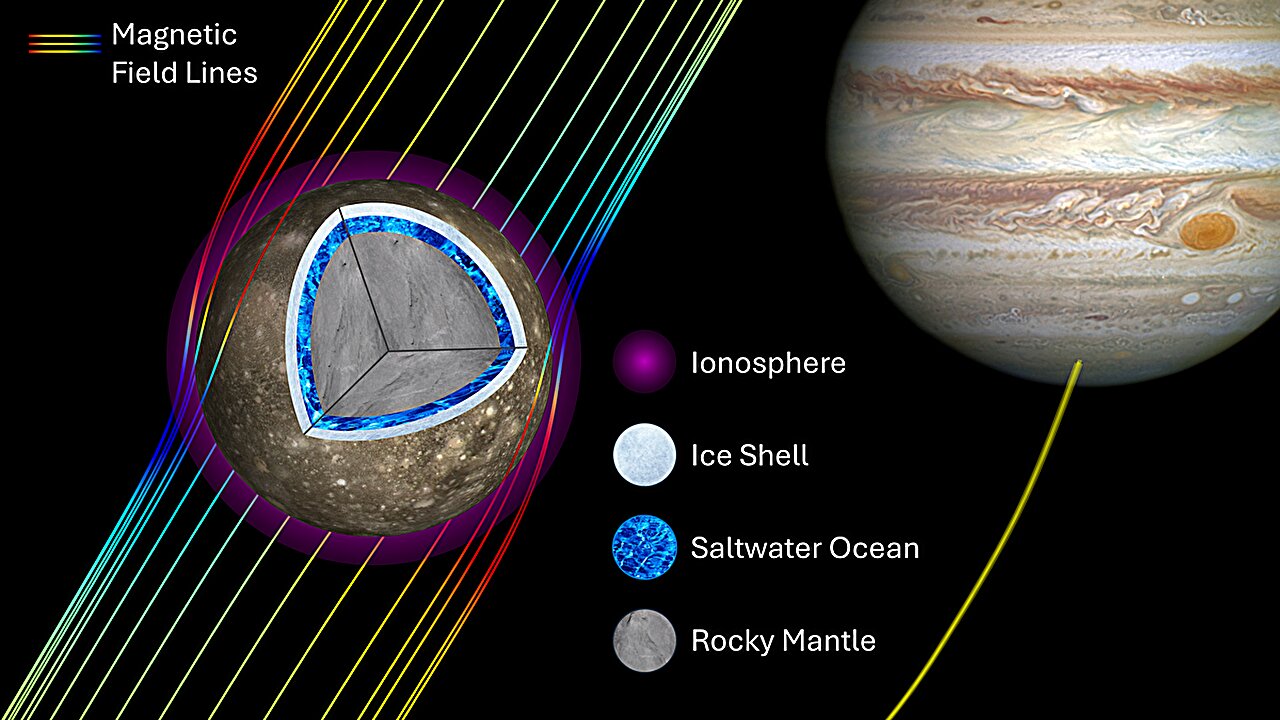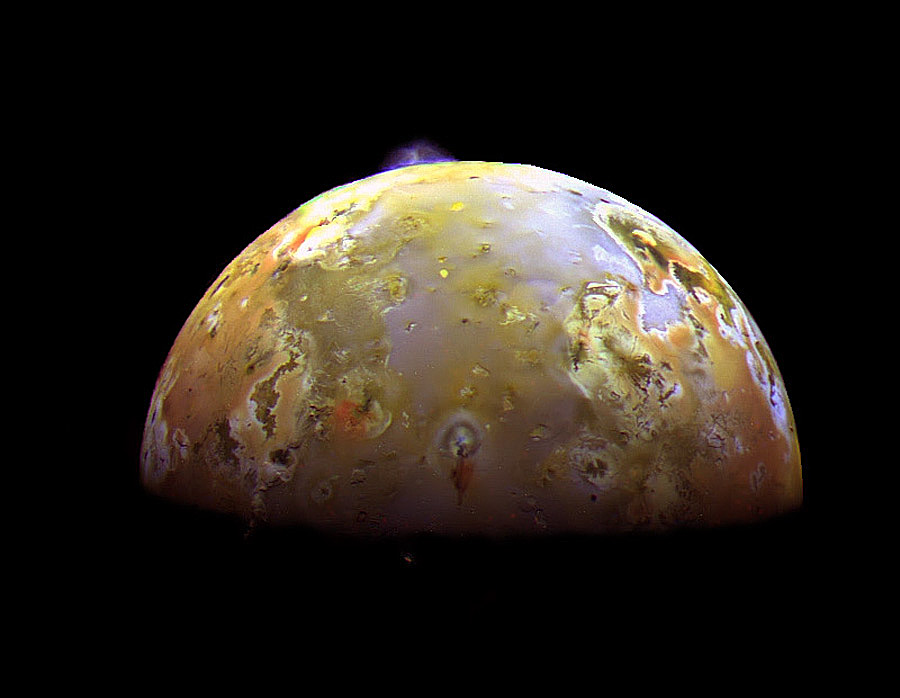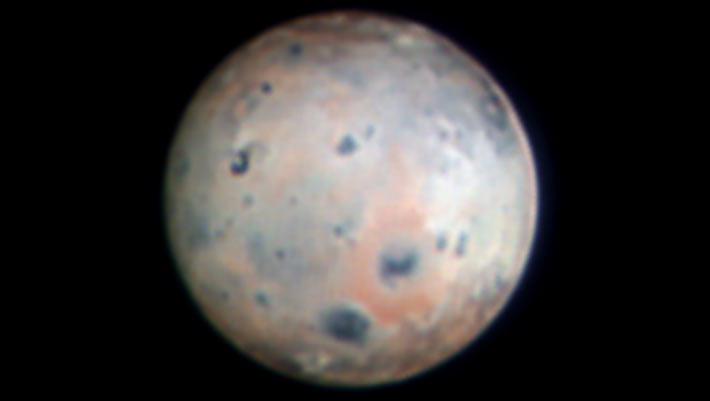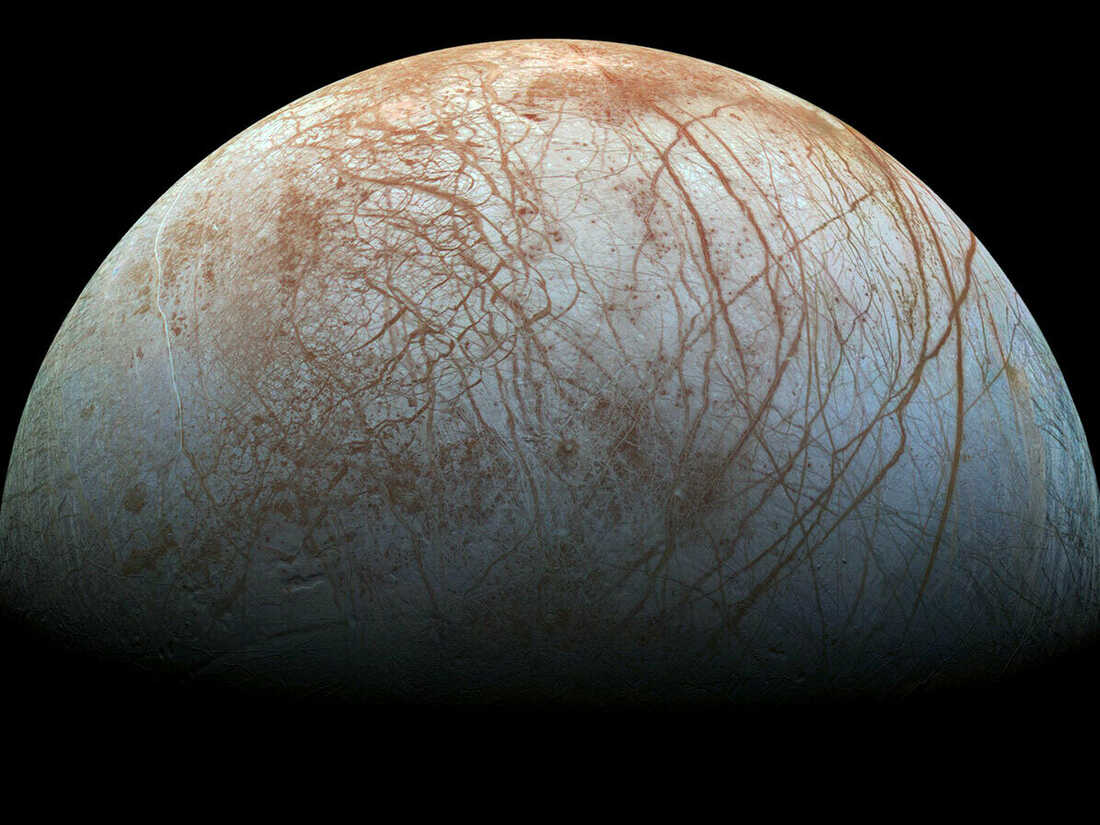
Recent expanded analysis much more strongly suggests that Callisto hosts a subsurface ocean.

Io does not have a shallow global magma ocean beneath its surface, counter to previous claims, suggests a paper published in Nature.

Using the SHARK-VIS instrument on the Large Binocular Telescope on Mount Graham in Arizona, the United States, astronomers have captured the highest resolution optical images of Io ever obtained from a ground-based telescope.

Using NASA’s Juno spacecraft, scientists have calculated the rate of oxygen production on Jupiter’s moon Europa — the first time any spacecraft had directly measured charged oxygen and hydrogen particles from the moon’s atmosphere.

Jupiter's largest moon, Ganymede, features a surprisingly strong magnetic field for its size. Now, a new experimental study has put one of the leading models of core dynamics to the test: the formation of crystalized 'iron snow'.

Now, using the James Webb Space Telescope, astronomers have found carbon on Europa’s surface, which likely originated in this ocean. The discovery signals a potentially habitable environment in the ocean of Europa.

Strange double ridges on the surface of Jupiter's ice moon Europa could be signposts to shallow reservoirs of water.

Jupiter's moon Europa is a prime candidate in the search for life. The frozen moon has a subsurface ocean and the new research shows that the moon is pulling oxygen down below its icy shell.

Researchers have found what may be remnants of the solar system’s largest impact structure, ancient concentric troughs that extend across almost the entire surface of Jupiter’s moon Ganymede.